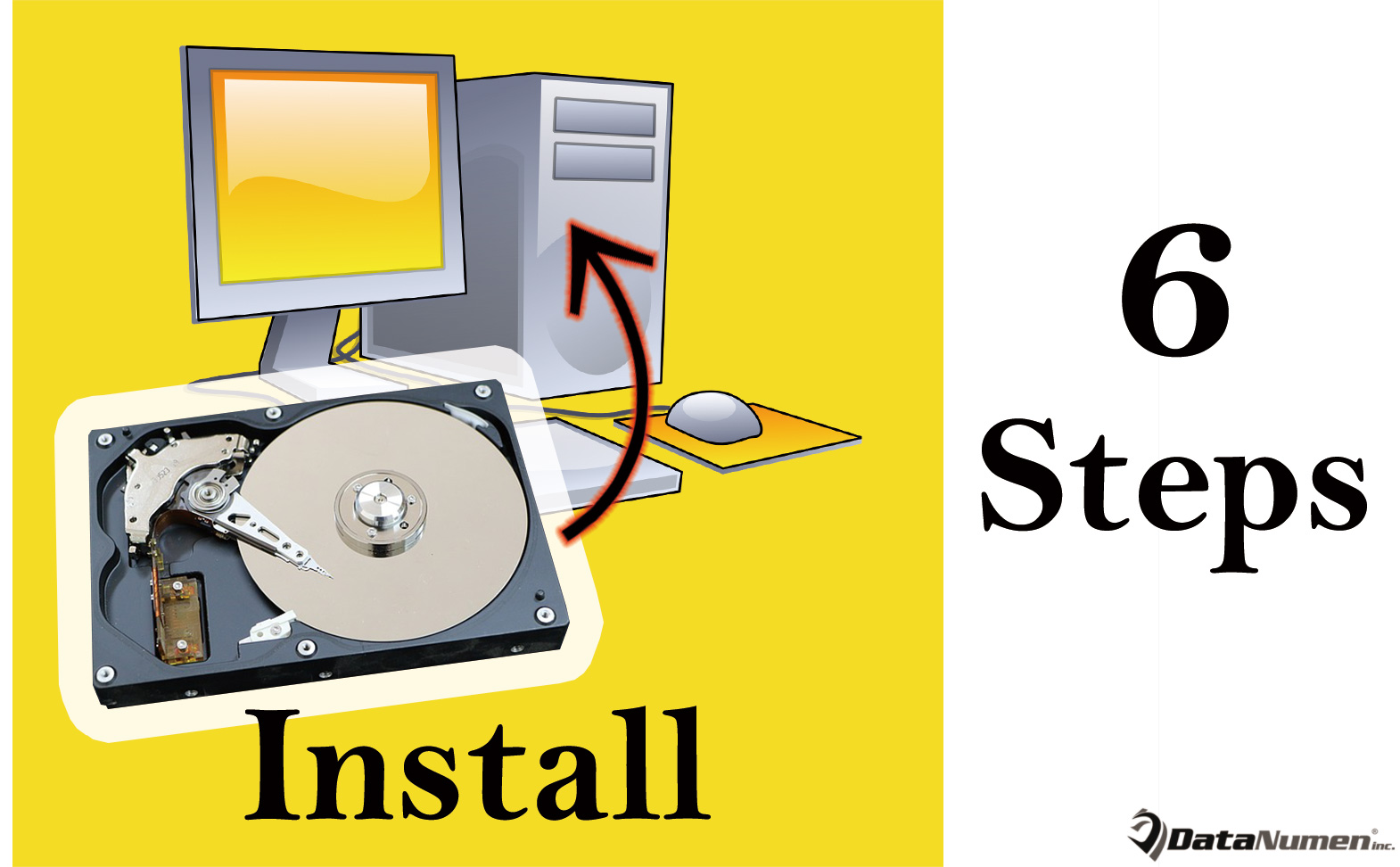Many users need to install a new internal hard drive in their Desktop computers as it is better than using external hard drives which may be slower. Now, in this article, we will expose the 6 key steps to safely install a new hard drive in Desktop PC.
In order to gain secondary storage, users tend to install a new hard drive in their Desktop computers. Generally, this process is simply involving installing the disk, connecting all the cables and formatting the drive for normal use. However, you’d better still keep cautious and learn more things in order to make disk installation as successful as possible. A small mistake in this course can damage the drive as well as its internal data, such as PST corruption. Here we’ll guide you to securely install a new hard drive in your Desktop PC in 6 steps.

1. Back up Data
First of all, you have to back up your critical files to other data storage device, like external hard drive or the cloud storage and so on. This step is quite important in that it will save you from any data disasters during the disk installation process.
2. Check All Connections
Then, you ought to examine all connections between the hard drive and the PC. Most hard drives include a data cable, a power adapter cable and various screws. Thus, if you do not have these kits, you have to purchase them firstly. Of course, they have to be compatible with each other.
3. Mount the Drive
After all the preparations, the key step is coming. That is to mount the hard drive. Also, it is probably the most difficult part of this process. To start with, you need to secure the drive to the cage, which usually demands 4 screws. Afterwards, you will be required to connect the drive to your system, which means connecting all the cables.
4. Configure BIOS
Subsequently, you should boot into your computer BIOS to ensure if the new disk is recognizable and position the drive correctly. If the drive is over there, you had better proceed to enable “auto-detect” feature. In addition, you need re-examine the boot sequence, insuring that your computer will not suffer boot failure due to wrong boot order.
5. Initialize Drive
Later, to normally utilize the new installed hard drive, you have to initialize this hard drive. After various drivers have been installed automatically, you can head to “Disk Management” to initialize this hard drive. Just locate the disk in the “Disk Management” screens, right click on it and choose “Initialize Disk”. Leave all the settings as such and hit “OK”.
6. Partition & Format
Eventually, you have to create partitions on this hard drive and format them for use. Still in “Disk Management” window, right click the unallocated space and opt for “New simple volume” and click “Next”. Then, specify the size, drive letter and file system. Moreover, you should enable “Perform a quick format” option. Lastly, follow the onscreen instructions to finish partitioning and formatting. If you want to create multiple partitions, just repeat the same steps.
Author Introduction:
Shirley Zhang is a data recovery expert in DataNumen, Inc., which is the world leader in data recovery technologies, including fix sql and outlook repair software products. For more information visit www.datanumen.com